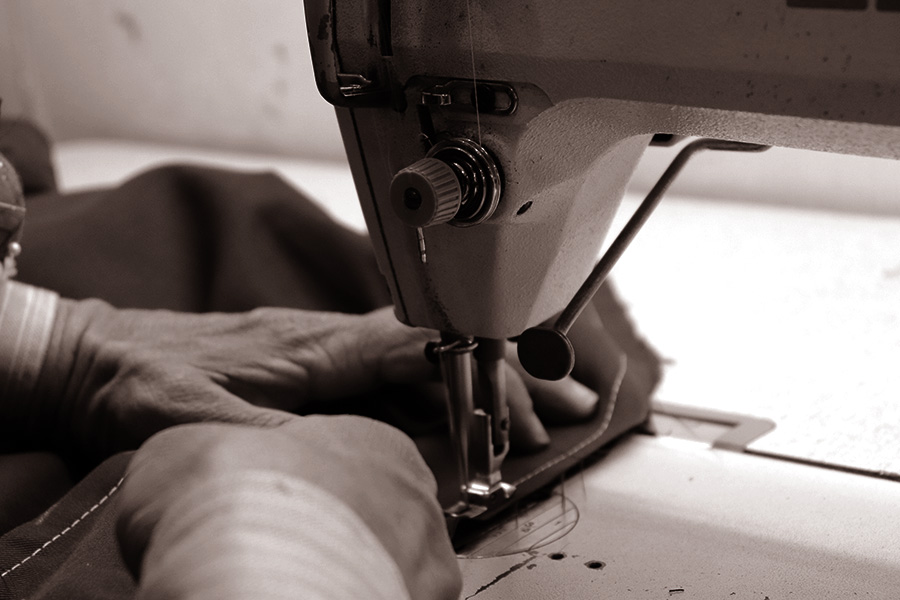Recognizing the Tailoring Refine: From Fabric Selection to Final Suitable for the Perfect Wardrobe
The tailoring process is an intricate interaction of art and scientific research, starting with the vital decision of material choice and finishing in the specific adjustments of last installations. Each material kind brings one-of-a-kind top qualities that influence not only the aesthetic allure but also the garment's long life and viability for numerous events. Comprehending the subtleties of customizing techniques can elevate one's wardrobe to unprecedented degrees of class. As we check out these components further, one have to think about how also the smallest details can significantly influence the overall outcome of one's individual design.
Significance of Material Selection
Selecting the ideal fabric is essential in the customizing procedure, as it directly affects the convenience, resilience, and total aesthetic of the final garment (tailor perth). The option of fabric sets the foundation for the garment's efficiency, style, and capability. Different materials possess one-of-a-kind buildings, such as weight, stretch, and breathability, which can considerably affect how the garment drapes and fits the body
Moreover, textile selection affects the garment's durability and simplicity of care. Top quality materials can stand up to deterioration, keeping their look and structure gradually, while lower-quality materials might cause pilling or fading. Additionally, the ideal material adds to the garment's ability to shift throughout events and periods, thereby enhancing flexibility.
A customized piece made from a proper fabric not only showcases craftsmanship but likewise boosts the user's confidence. Recognizing the subtleties of fabric option is vital for any type of customizing venture. It makes certain that the end product not only fulfills the visual needs of the client but additionally aligns with functional requirements, therefore attaining an unified balance between type and feature in the customized wardrobe.
Types of Fabrics and Their Usages
Recognizing the different kinds of materials offered is essential for making informed decisions during the customizing procedure. Each material possesses unique attributes that dictate its viability for specific garments and celebrations.
Its versatility enables it to be customized right into every little thing from t-shirts to gowns. Its natural flexibility assists garments keep form over time.
Silk exudes deluxe and is lightweight, making it best for eveningwear and fragile shirts; however, it needs careful handling because of its frailty. Bed linen, with its textured coating, is a prominent choice for warm climates, offering a crisp and airy feeling, yet it wrinkles conveniently, which may impact the garment's appearance.
Artificial textiles, such as polyester and nylon, offer resilience and resistance to wrinkles, making them suitable for everyday wear and active apparel. Understanding these textile types and their properties enables for far better decision-making, ensuring that each customized item not only fits well but likewise straightens with the intended function and event.
The Tailoring Strategies Clarified
The art of customizing relies upon a selection of strategies that change textile into well-fitted garments. Central to this process is pattern drafting, where a tailor develops design templates based on the client's dimensions and desired design. This preliminary step guarantees that the garment will certainly fit the user properly before any cutting takes place.
When patterns are established, cutting methods come right into play. Precision is paramount as errors can result in misfitting garments. Tailors frequently utilize numerous cutting techniques, such as single-layer cutting for intricate layouts and multiple-layer cutting for effectiveness on typical patterns.
Basting is one more essential technique, allowing tailors to briefly stitch fabric pieces together for a preliminary fitting. This technique provides the opportunity to evaluate the drape and total silhouette prior to last stitching.
Seaming strategies, consisting of french joints and flat-felled seams, enhance the garment's longevity and visual allure. Tailors also employ methods such as interfacing and extra padding to give structure and shape to details areas, like shoulders and collars.
Finally, completing techniques, her latest blog consisting of hemming wikipedia reference and edge completing, make sure the garment's longevity while offering a refined look. Together, these strategies develop the foundation of efficient tailoring, causing beautiful, custom-fit clothing.
Fitting Adjustments and Factors To Consider

Trick considerations include the shoulder fit, which ought to neither sag neither limit movement, and the sleeve size, which should permit comfortable arm movement while maintaining a polished look. Additionally, changes at the waist can refine the shape, with alternatives to allow out or take in textile as needed.
The surge of pants is one more crucial variable; it should rest comfortably above the hips without causing discomfort, permitting ease of activity. Hemming lengths for both trousers and skirts ought to reflect the wearer's favored click design while valuing percentages.

Keeping Your Tailored Clothes
Always follow the treatment tag directions, which may advise dry cleaning for fragile materials or machine washing for even more durable products. Avoid frequent laundering, as this can put on down the textile and modify the garment's form.
Storage space is similarly important; use padded hangers for jackets and layers to maintain shoulder structure, and store pants folded nicely or hung to avoid creasing. Protect garments from direct sunshine, which can fade shades and damage fibers.
Furthermore, regular examinations for small repair work can protect against bigger problems. Inspect for loosened buttons, tearing seams, or indications of moth damage, resolving these issues promptly to preserve the garment's honesty.
Finally, take into consideration seasonal turning. Putting on customized pieces in small amounts permits textiles to recover, extending their lifespan. By implementing these maintenance approaches, you can ensure that your customized garments stay as immaculate as the day you initially used them, boosting your excellent wardrobe for several years to find.
Verdict
The customizing process, including textile choice, knowledgeable methods, and precise fitting changes, plays an essential role in producing garments that improve both comfort and style. Each phase adds to the total efficiency of the final item, making sure that apparel not only fits well however likewise shows individual identification. Understanding the significance of maintenance expands the life of customized garments, solidifying their value in a well-curated closet. A thorough technique to customizing culminates in a certain and polished appearance.
Selecting the ideal textile is critical in the customizing process, as it directly influences the convenience, durability, and total visual of the final garment. The option of material sets the structure for the garment's efficiency, design, and capability. Various textiles possess unique residential properties, such as weight, breathability, and stretch, which can substantially impact exactly how the garment drapes and fits the body.
The art of tailoring relies on a range of strategies that transform fabric right into well-fitted garments.The customizing process, encompassing fabric selection, knowledgeable techniques, and specific fitting adjustments, plays a vital role in creating garments that enhance both convenience and design.